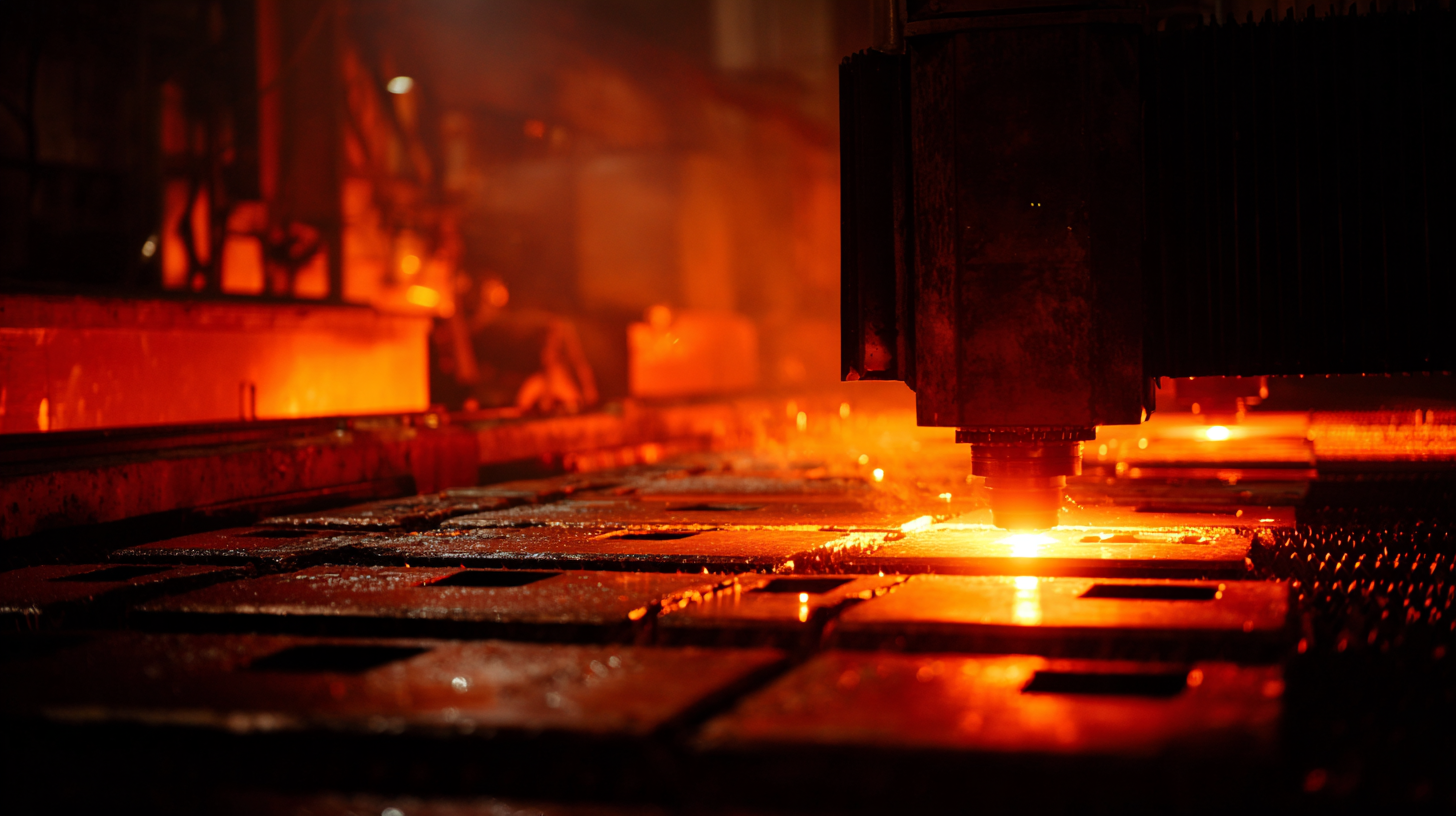The Ultimate Guide to Selecting the Best Industrial Plasma Cutter for Your Business Needs
In the ever-evolving landscape of industrial manufacturing, selecting the right tools is critical for efficiency and precision. One essential instrument that has gained immense popularity is the Industrial Plasma Cutter, known for its ability to quickly and accurately cut through various materials. However, the abundance of options available can make the decision-making process daunting for many business owners. This guide aims to illuminate the top strategies for selecting the best Industrial Plasma Cutter tailored to your specific business needs.

Whether you're a seasoned professional or just starting, understanding the key features, performance metrics, and operational considerations will empower you to make an informed investment that enhances productivity and drives success in your operations. Join us as we delve into the fundamental aspects that will help you navigate the complexities of choosing the perfect plasma cutter for your industrial applications.
Understanding Different Types of Industrial Plasma Cutters and Their Applications
Industrial plasma cutters are essential tools that have revolutionized various sectors by providing efficient and precise cutting solutions. Different types of plasma cutters, including manual/handheld and CNC/automated models, cater to a wide array of applications. According to industry reports, the demand for CNC plasma cutters has been steadily increasing, projected to grow at a CAGR of 7.5% over the next few years, driven primarily by advancements in automation and the need for high-accuracy cutting techniques across industries such as manufacturing and construction.

In addition to traditional applications, innovative technologies such as Plasma Activated Water (PAW) are emerging, particularly in the food industry. Research indicates that PAW can effectively reduce microbial contamination, enhancing food safety while also promoting sustainability in food processing. This reflects a broader trend where plasma technology is gaining traction in diverse fields, from garment manufacturing, where it aids in accelerating cutting and sewing processes, to its application in healthcare for sterilization and sterilizing surfaces. The versatility of plasma technology underscores its significance in modern industrial applications.
Key Factors to Consider When Choosing a Plasma Cutter for Your Business
When selecting the best industrial plasma cutter for your business needs, it's essential to consider several key factors that will ensure optimal performance and productivity. First and foremost, assess the material types and thicknesses you will be working with. Different plasma cutters have varying capabilities when it comes to cutting metals like steel, aluminum, or stainless steel, and knowing your specific requirements will guide you in choosing the right machine. An industrial plasma cutter should have the versatility to handle the materials essential for your projects while providing clean and efficient cuts.
Another critical aspect to evaluate is the cutter's power supply and cutting capability. Plasma cutters are typically available in different power ratings, and selecting one that matches your workload can significantly impact your operation's efficiency. Consider features such as cut speed, duty cycle, and portability. A machine that offers a higher duty cycle will allow for extended use without interruptions, making it ideal for businesses with heavy workloads. Additionally, if you plan to move your equipment frequently, look for a model that balances power with mobility to fit your workspace requirements. By focusing on these factors, you can ensure that the plasma cutter you choose will meet your business's demands effectively.
Comparing Features: Portability, Power Output, and Duty Cycle in Plasma Cutters
When selecting the right industrial plasma cutter for your business, three features stand out: portability, power output, and duty cycle. Portability is essential if your operations require moving the cutter between different job sites. Look for models that are lightweight and come with built-in handles or wheels, allowing ease of transport without sacrificing performance. Battery-operated options can also enhance mobility, providing you with the freedom to work in locations where power sources are limited.
Power output significantly influences the cutter’s efficiency and the thickness of materials it can handle. When comparing models, assess the maximum amperage and cut capacity to ensure they align with your intended applications. Higher power output generally translates to faster cutting speeds and cleaner cuts, especially in thicker materials. However, it's crucial to balance this with energy consumption, as a more powerful cutter might lead to increased operational costs.
Lastly, consider the duty cycle, which indicates how long a plasma cutter can operate continuously before needing a cooldown period. A higher duty cycle is beneficial for heavy industrial use, ensuring your machine can handle prolonged cutting jobs without interruption. By evaluating these features thoroughly, you can make a well-informed decision to match the plasma cutter’s capabilities with your business requirements.
The Ultimate Guide to Selecting the Best Industrial Plasma Cutter
Budgeting for a Plasma Cutter: Understanding Costs and Return on Investment
When considering a plasma cutter for your business, understanding the costs involved is crucial for effective budgeting. The initial investment can vary significantly based on the machine's capabilities, brand, and features. Basic models may start around $300, while more advanced industrial-grade plasma cutters can exceed $10,000. It's important to assess not just the purchase price, but also additional expenses such as consumables, maintenance, and potential upgrades. By outlining these costs, businesses can create a realistic budget that reflects both immediate and long-term financial commitments.
Return on investment (ROI) is another vital aspect to consider when selecting an industrial plasma cutter. A high-quality plasma cutter can enhance productivity and efficiency, allowing for faster and more precise cutting. This increased efficiency can lead to cost savings in labor and material wastage over time. To calculate ROI effectively, businesses should analyze how quickly the plasma cutter can pay for itself through improved operational output and lower overhead costs. By strategically investing in a plasma cutter that aligns with their needs, businesses can ensure they not only cover initial expenditures but also reap the benefits of enhanced profitability in the long run.

Future Trends in Plasma Cutting Technology and Their Impact on Industry
As industries continue to evolve, so does the technology behind plasma cutting. Future trends indicate a significant shift towards automation and intelligent systems in plasma cutting technology. These advancements are set to enhance efficiency, reduce waste, and improve precision in various industrial applications. For instance, the integration of artificial intelligence and machine learning algorithms enables plasma cutters to adapt to different materials and thicknesses in real-time, resulting in superior cut quality and minimal operational interruptions.
Moreover, sustainability is becoming a key focus in plasma cutting technology. Manufacturers are increasingly designing plasma cutters that consume less energy and produce fewer emissions, aligning with the overall industry trend towards greener practices. Innovations such as hybrid power sources and advanced filtration systems are expected to play a crucial role in reducing the environmental footprint of plasma cutting operations. As businesses look to the future, investing in cutting-edge plasma cutting solutions that embrace these technological advancements will be essential to remain competitive and responsive to market demands.
 English
English  Français
Français 